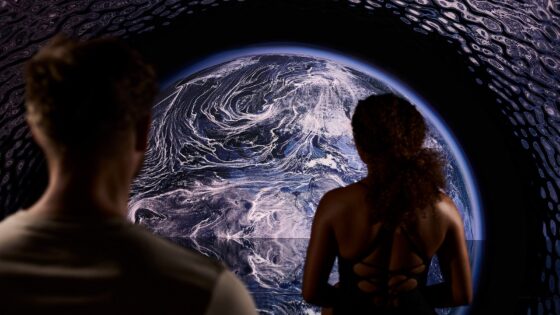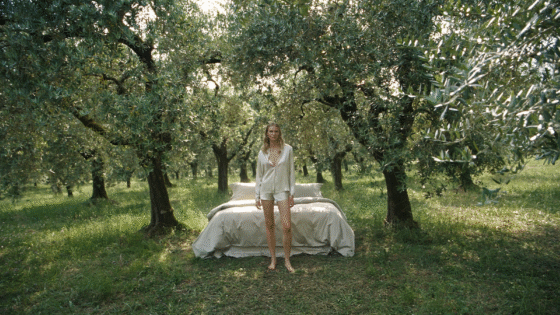With pools and spas dominating the headlines on Hotel Designs this month, editor Hamish Kilburn has five minutes with Beverley Bayes, Director of Sparcstudio, which is responsible for the design schemes inside Cottenmill Spa at Sopwell House, The Spa at South Lodge and many more luxury wellness hubs that have challenged convention…

Earlier this month, Sparcstudio kindly shared its insight on how the current pandemic will affect wellness in hotels going forward.
Although the feature was honest, engaging and informative, it left us and our readers with wanting to know more. Considering the significance of COVID–19, and its long-term affect on the perception of wellness, I caught up the studio’s director, Beverley Bayes, ahead of Hotel Designs LIVE on June 23, where she will be on the panel as we discuss the The Future of Wellness Post-Pandemic.
Hamish Kilburn: Beverley, some would argue that spas and wellness areas are a breeding ground for viruses. Is that a fair statement?
Beverley Bayes: There is a lot of debate about this topic and it’s even more relevant today as spas consider their reopening strategies. I don’t believe it is a fair statement. There are very strict cleaning and hygiene protocols already in place and spas adhere to these stringently. But good design is absolutely key in creating a spa that is easy to maintain and it’s all about the detail. Sadly there are examples of bad detailing even within luxury spas. A common one is not designing in good ‘falls’ to flooring in wet areas, the sloping floor detail enables water to drain off rather than pooling, which around a pool deck is critical. Get it wrong and you face either having your staff constantly going around with squeegees to get rid of excess water , or resorting to the installation of anti-slip matting (as recently witnessed in an otherwise beautiful spa that shall remain nameless!)
Going forward, when spas are given the green light to reopen, I would advise businesses to refer to their equipment and wet and thermal suite suppliers for additional advice on maintaining health and hygiene in a COVID-19 world. I am already seeing suppliers issue new guidance of cleaning rituals that will help to protect guests and staff, so it’s a case of liaising with your current suppliers and following their advice.
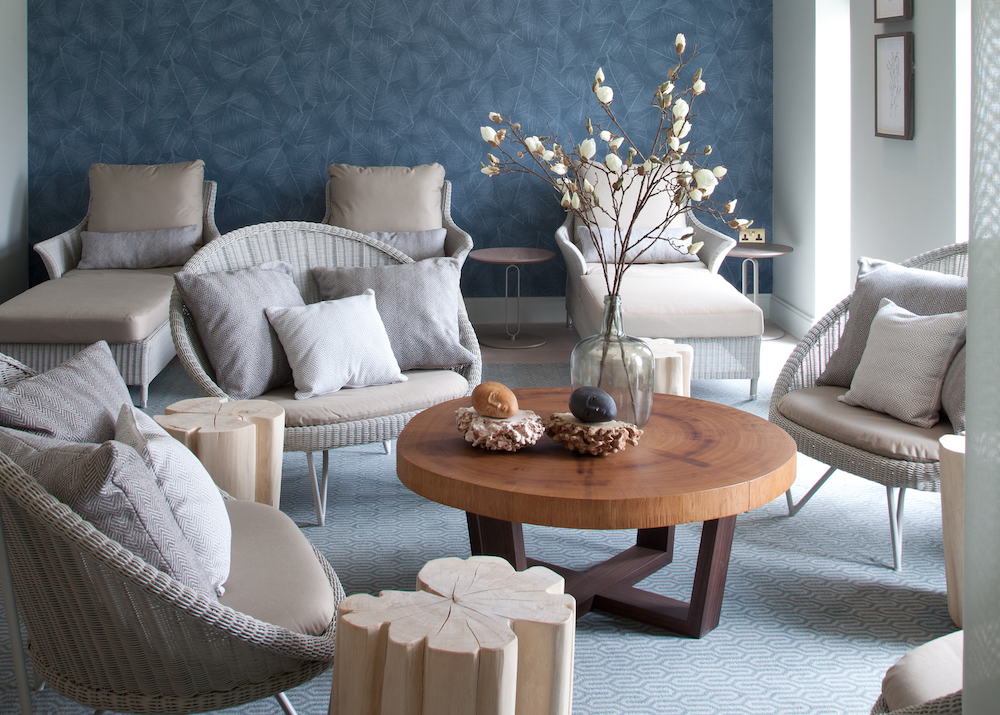
Image credit: The Spa at South Lodge, designed by Sparcstudio
HK: How can a hotel sensitively inject its style and branding into the spa/wellness areas?
BB: ‘Sensitively’ is the key word here. I think it’s a real missed opportunity when a spa feels like a continuation of a hotel environment, with similar materials and finishes and maybe a sense of ‘formality’ that you might experience in the Hotel public spaces. For us a Hotel Spa is a chance to enter another more sensuous world where guests can kick off their shoes and ‘let their hair down’ !
For that reason, We always strive to create an informal ‘bare foot luxury‘ vibe to the spas that we design. This can be achieved by adding playful elements, for example at Sopwell Spa where we created a central relax area in the Garden relax room with a group of suspended Swinging chairs arranged around a panoramic fireplace overlooking the fabulous spa Garden. (The garden was expertly designed by Ann-Marie Powell )
Style and branding elements that Hoteliers can inject into a spa include a great service ethic and service style and also a passion for food and beverage, For example at South Lodge Spa, the Exclusive Collection team led by Danny Pecorrelli, applied their passion for F & B to create a unique 80 seater relaxed all day dining concept for the Spa called ‘Botanica’ (Working in conjunction with the ‘Gorgeous group’ and Sparcstudio for the interiors).
The restaurant offer is designed to complement the other more formal dining options at the Hotel and is open to all hotel, spa users and external guests and is based on botanical, largely plant-based sharing plates utilising ingredients from local suppliers from the south downs.
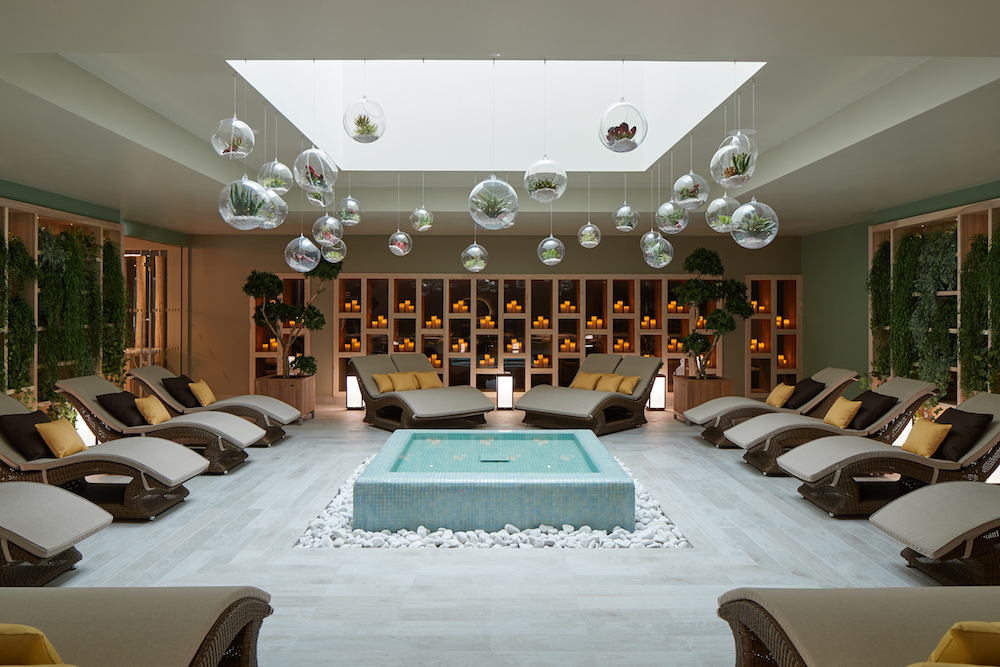
Image credit: Aqua Sana Spa County Longford, designed by Sparcstudio
HK: From a lighting perspective, has LED lost its place to natural lighting in the spa?
BB: Sparcstudio director Tom Howell, is responsible for all of our lighting design, ‘Being well lit in a spa is key to a sense of wellbeing. We do design spaces to utilise natural light where ever possible, but LED lighting in linear strip or curving tape form concealed in a wall floor or ceiling or joinery feature, provides subtle washes of indirect light and enables us to create great effects. The key with spa lighting is to be mindful of the lighting source position and the guest position which is often in a lying down / facing up position, so the ‘old school’ style ceiling mounted halogen spotlights are definitely to be avoided in order to prevent uncomfortable glare for guests’.
HK: What will the spa look like in 50 years?
BB: High tech … low tech. I think the ancient traditions and rituals developed by the Romans in terms of bathing, washing and thermal experiences in a social setting will still be at the core of the spa experience, together with ‘hands on treatments’ reflecting the power of human touch, which will always have a place in spa.
Technology will no doubt have a big role to play in terms of treatments. Fully immersive Virtual reality experiences will no doubt be on the menu, but designed to appeal to all of the senses, including sound, touch and smell, giving wellbeing, as well as cosmetic benefits.
Given our precious link to the natural world, Spas that celebrate unique settings, will be an important part of worldwide Spa Tourism. For example, the world’s first ‘energy-positive’ hotel, Svart, will open in Norway’s Arctic Circle in 2022.

Image caption: The Spa at South Lodge, designed by Sparcstudio
HK: How do you find out about new products on the market?
BB: Word of mouth, trade shows and social media and we are also lucky to be kept updated with the latest innovations and cutting edge products that are being developed by the suppliers themselves. We also relish the opportunity to create bespoke individual designs – be it furniture, (for example the double lounger with integral lighting at Sopwell’s Cottonmill Club spa) light fitting or heat cabin and thermal suite, all of which helps to add to a Spa’s feeling of authenticity and uniqueness.
Quick-fire round
HK: What’s the biggest misconception about being a designer who specialises in spas and wellness areas?
BB: That we design ‘spa pools’- those lovely big injection moulded plastic ‘people soup’ models spring to mind! A common mistake is to design a series of spa ‘spaces’ without really understanding or thinking through the journey and how they connect.
HK: Where is next on your spa bucket list?
BB: Aman Kyoto, Anada in the Indian Hymalas and Aro Hā (Overlooking the ‘otherworldly’ expanse of Lake Wakatipu) in New Zealand’s Southern Alps.
HK: What is your go-to treatment?
BB: A Hammam. A recent Couples Hammam in Bodrum was amazing – the facial loofa part was a bit scary at the time but was amazingly effective!
HK: What has been the most significant innovation on the wellness scene in the last five years?
BB: I would say one of the largest innovations, which is much more low-tech, is the rise of the Spa Garden, particularly here in the UK.
HK: What does luxury mean to you?
BB: Uninterrupted time away from technology and work/ home life distractions relaxing in a tranquil, stimulating/ sensuous environment that is ‘authentic and unique’ and beautifully / thoughtfully designed of course!
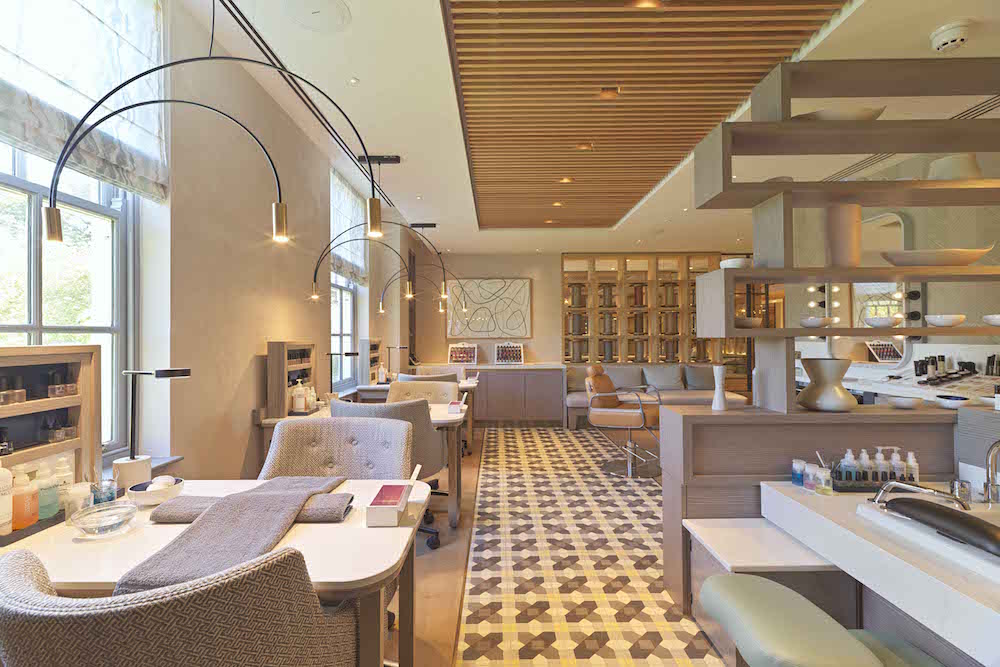
Image caption: Cottonmill Club at Sopwell House, designed by Sparcstudio
HK: How is social media driving a change in the way in which wellness spaces are being designed?
BB: Social media is a powerful influence in the world of spa. Hotels and wellness spaces are very visual and this links perfectly to a social media platform like Instagram as it is all about the perfect picture. What we are seeing, in some instances, is that spas are creating experiences that are very obviously designed to create an ‘Instagram worthy shot’. An over the top (but often used) example is the placement of pink flamingoes in a spa or pool area, or a snug area that is branded and decorated with flower walls. You see this a lot in resorts in the Indian Ocean. The difficulty is that these experiences don’t place wellness or the guest experience at the heart of it. Following short term trends can be a problem as they are short lived and aren’t durable. They will quickly look outdated as Instagrammers hunt the next big thing, leaving your wellness space looking tired and past its sell-by date.
HK: There is a difference between wellness and wellbeing, how can modern spas evoke both in their design?
BB: Wellbeing is the experience of health, happiness, and prosperity. It includes having good mental health, high life satisfaction, a sense of meaning or purpose, and ability to manage stress Good Spa Design should create a sense of wellbeing by providing experiences that appeal to the senses and are ideally related to natural elements, and provide an escape from the stresses of work and everyday life.
Wellness, the quality or state of being healthy in body and mind, especially as the result of deliberate effort. Fitness/ wellness facilities are an increasingly important element of a spa offer, in the form of yoga studio or outside Yoga deck, a well-designed gym (sensitively designed to fit with the Spas over-all ambience).
We also anticipate that there will continue to be overlaps or a blurring of the lines between fitness, wellness, spa and medical facilities. High end gyms such as ‘Third Space’ integrate spaces for relaxation and wellbeing with the inclusion of thermal suites and relaxation spaces. The sensuous Hot yoga studio that we designed at the Tower Bridge site has shaker style panelling and end grain Juniper log panelling that emit a soothing aroma when heated.
Sparcstudio, which will be involved in Hotel Designs LIVE on June 23, is one of the brands that has taken advantage of our Industry Support Package. To keep up to date with supplier news, click here. And, if you are interested in also benefitting from this three-month editorial package, please email Katy Phillips by clicking here.
Main image credit: SparcStudio

